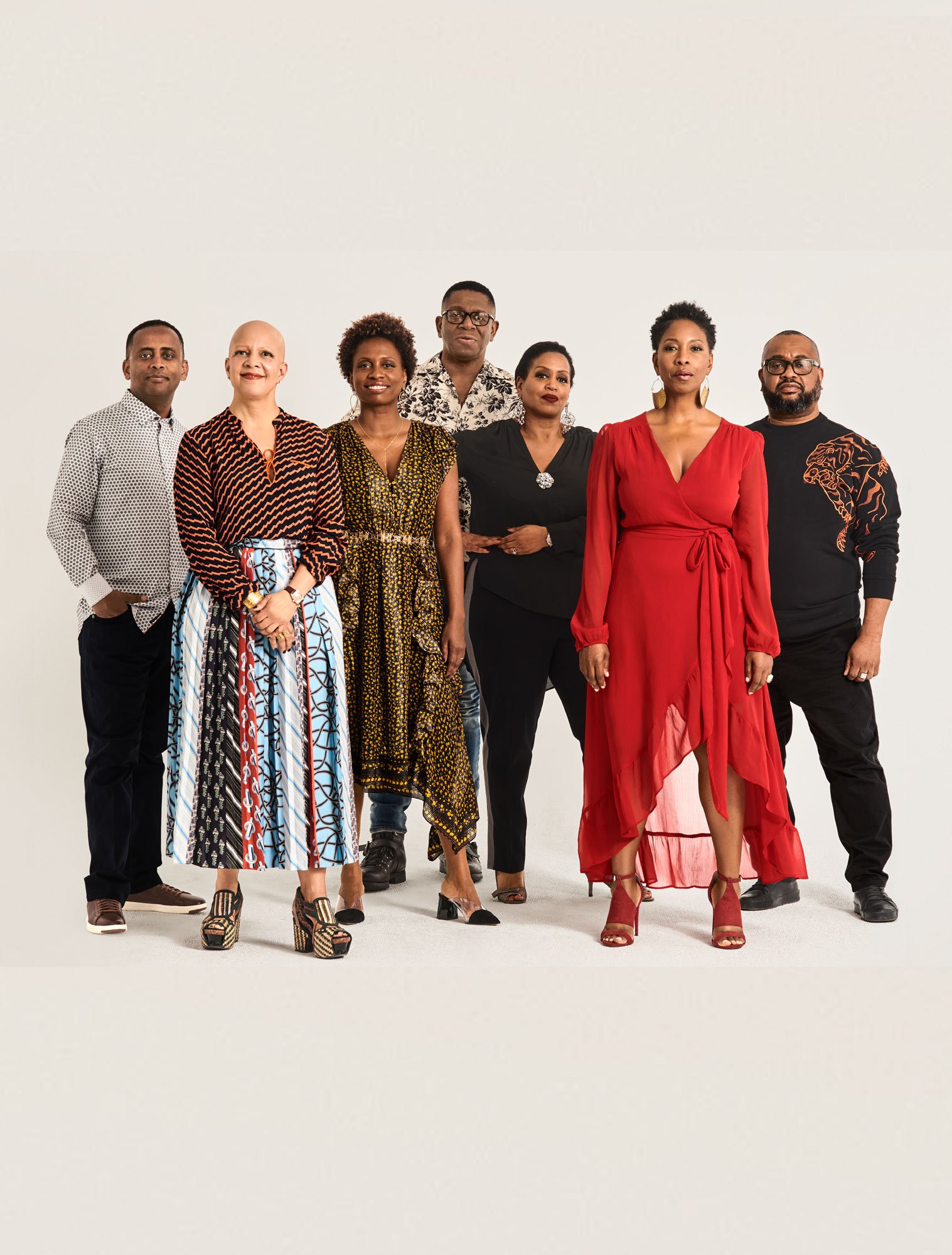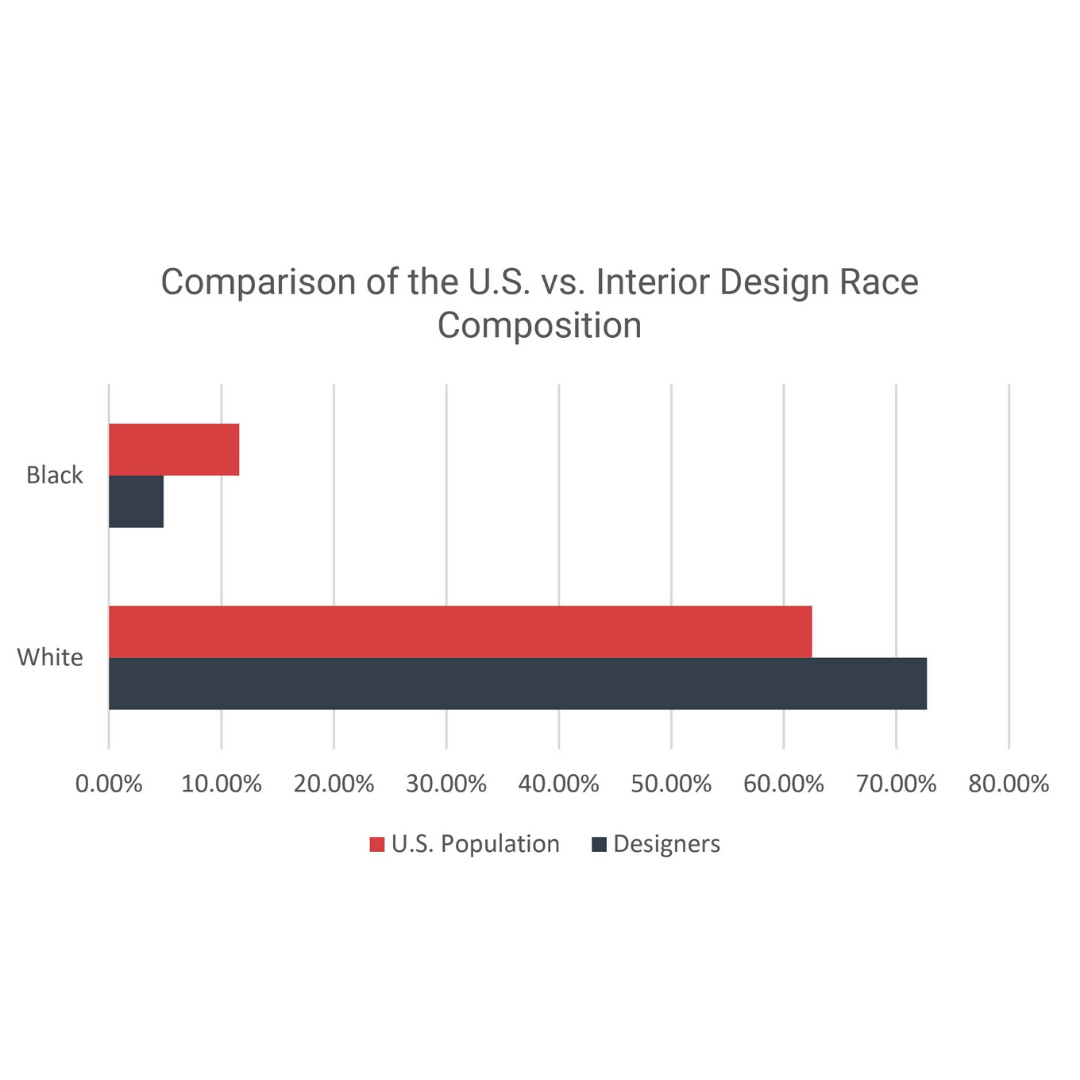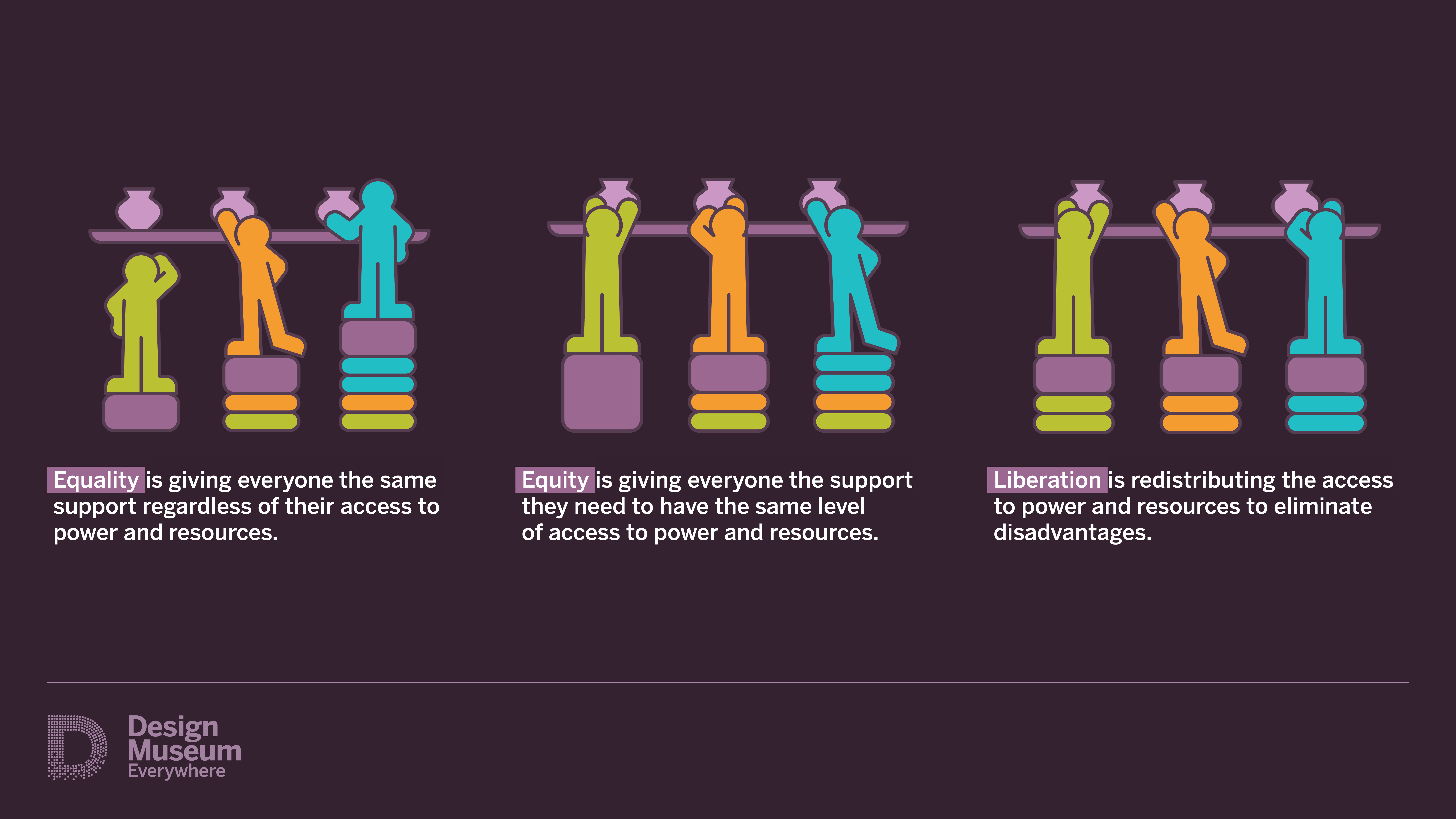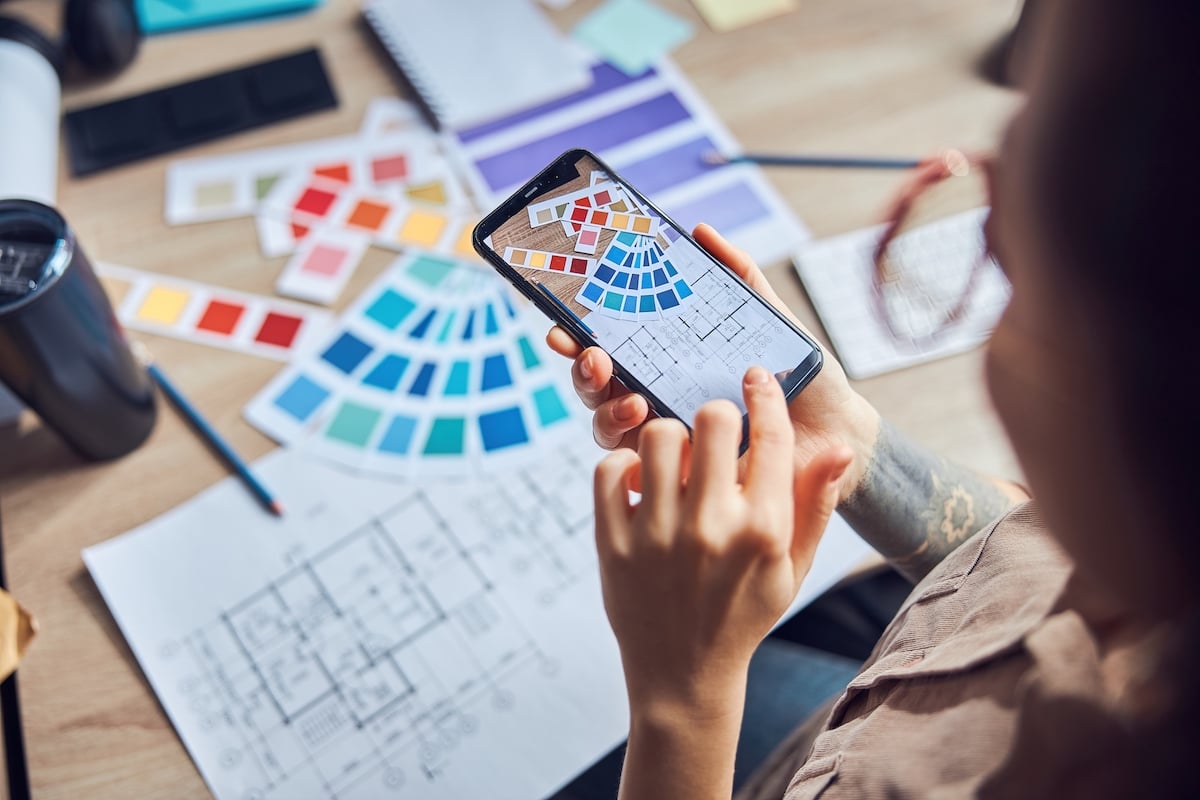
At ThinkLab, we pride ourselves on providing meaningful research to help members of the interiors industry make informed decisions about their products, their strategy, and the future. Data is the driving force behind all that we do. So as recent injustices have further galvanized the Black Lives Matter movement, we, as a brand, took a step back and thought about how we could use our expertise as “diggers into the heavy-hitting questions” in a way that advocates for and celebrates diversity within our industry.
According to the U.S. Census, only 60.1 percent of those who live in the U.S. identify as White alone, whereas 13.4 percent are Black or African American alone—and 26 percent self-report as Asian, bi-racial, or other. Yet according to the Census Bureau, 72.7 percent of designers of all disciplines are White (non-Hispanic) and only 4.84 percent are Black. That’s a problem, folks, for more reasons than this one article could ever tackle. We sat down with Malene Barnett, founder of the Black Artists + Designers Guild, and discussed some of the most pressing issues our industry faces in order to hear the perspective of those who have been silenced for far too long.

Image credit: ThinkLab
ThinkLab: There is greater diversity at design schools than in our A&D firms. Why is that?
Malene Barnett: Diversity is a complicated issue because it is so interlaced with privilege. Though design schools may admit and graduate more students of color, there are shields in place that exclude them from having access to jobs at firms. This is an institutional problem that is not exclusive to the design industry.
Before the pandemic, unemployment was at its lowest rate in 50 years. However, Black workers continued to face systematically higher unemployment rates, lower pay, poorer benefits, and fewer job opportunities. It pains me to say this, but Black people continue to be more vulnerable in the labor market than their White peers. The only way that we as a society can overcome this is if employers consciously seek out and hire people of color. Diversity in its entirety needs to be embraced in the design community. The surface of this field is too focused on creating fashionable spaces for a select few. This is inherently problematic because not all people look or live the same, but this restrictive industry has historically showcased some while excluding others.
TL: How do you, as a Black woman, handle this exclusion?
MB: Many qualified Black people in the labor market adhere to a code of silence when discussing their exclusion. We are tired of having to document and explain our experiences of exclusion to convince non-Black people of discriminatory hiring practices. This is a battle that I have been fighting since the beginning of my career, and I will continue to do so.
TL: How can we advocate for diversity not only in our own businesses, but in the way we design spaces?
MB: When it comes to inclusive design, the first word that comes to mind is empathy. Designers need to recognize that what is comfortable and desirable to some may make others uncomfortable. Designers should be intentional about asking questions regarding their choices in spatial and artistic organization.
TL: Can you elaborate with specifics?
MB: A good example is artist Llana Harris-Babou’s “Reparation Hardware,” a video art piece that brilliantly criticizes the racial implications of luxury design and how it can dehumanize people of color and turn our culture into props. In her piece, Harris-Babou displays a story of labor, value, and inheritance that is at the center of society’s most enduring injustices. Her work was inspired by our cultural objectification in the design world and in the broader American landscape. In order for spaces to feel more welcoming to those with diverse backgrounds, non-European art and culture needs to be embraced by designers.
TL: What do you wish you could say to the industry?
MB: To those who may say “all lives matter,” I would have a discussion about universal goals. Of course, we all believe that each and every life is important, but Black people are treated differently under the law and by society at large. Universal expectations do not take into account setbacks for many Black people. For example, during Hurricane Katrina, there was a universal goal of getting everyone out of New Orleans. Citizens were given orders to drive to safety. Unfortunately, this universal goal did not take into consideration that some citizens, many of them Black, did not have cars. Consequently, many Black people found themselves in dangerous situations during Katrina and some lost their lives. Yes, all lives matter, but not all lives are considered equal under the law in this country. That is what Black Lives Matter is about. It is about inclusivity. It is about equality. It is about survival.
We leave you with this portion of the statement from The National Association of Minority Architects in the hope that we can soon live in a world where these sentiments are not part of our reality: “The air in our nation is thick with a profound sense of grief and despair. Our collective air is so very thick that it’s literally hard to breathe. We struggle to grasp for air as we all navigate a global pandemic coupled with the deadly and pervasive virus called racism that has plagued America for over four centuries.”
Feature Image: Barnett and her team from Black Artists + Designers Guild. Image credit: Alaric S. Campbell.
This article originally was published in Bellow Press and was reposted here with permissions.
Amanda Schneider is President of ThinkLab, the research division of SANDOW. At ThinkLab, we combine SANDOW Media’s incredible reach to the architecture and design community through brands like Interior Design Media, Metropolis, and Material Bank with proven market research techniques to uncover relevant trends and opportunities that connect back to brand and business goals in a thought-provoking, creative, and actionable way. Join in to know what’s next at thinklab.design/join-in.


